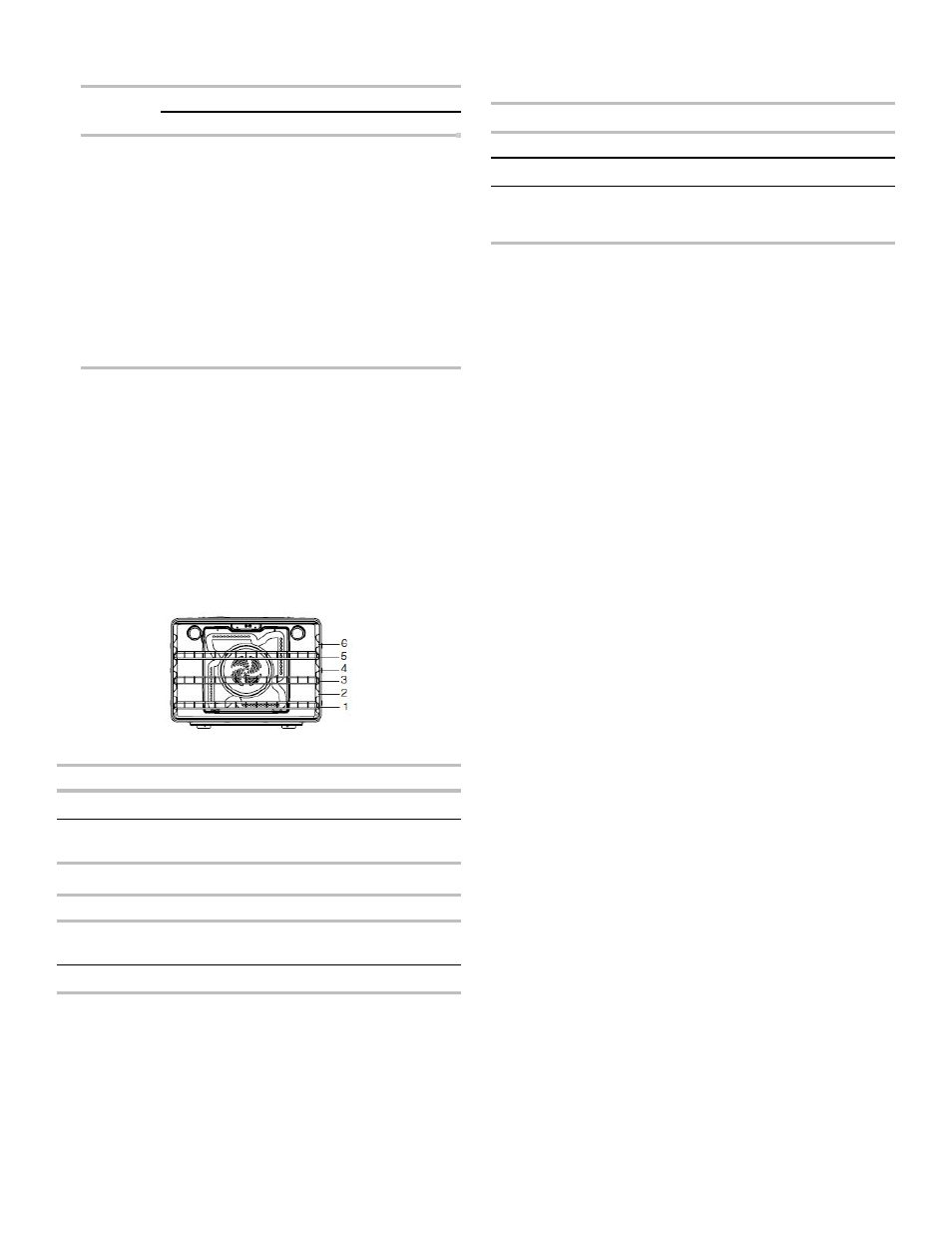Racks and bakeware_w10875903, Baking and roasting_w11553931, Broiling_w10875901 – Whirlpool 30 Inch Combination Wall Oven Control Guide Manuel d'utilisation
Page 5: Positioning racks and bakeware, Baking and roasting, Broiling, Preheating, Rapid preheat, Oven temperature

5
To Adjust Temperature:
1.
Press the number keypad as instructed by the scrolling text to
select the new temperature.
Keypad
Temperature Setting
°F
°C
1
170
77
2
200
93
3
225
107
4
250
121
5
300
149
6
325
163
7
350
177
8
375
191
9
400
204
0
450
232
NOTE:
The temperature adjustment will not appear on the
display, and no tones will sound. The scrolling text will be
shown on the display as it was before the keypad was
pressed.
2.
Press OVEN - START.
To Deactivate Sabbath Mode:
Press Settings - Clock, and then press “7” to return to regular
baking, or press OVEN - CANCEL to turn off the oven(s).
Positioning Racks and Bakeware
Use the following illustration and charts as a guide for positioning
racks.
Rack Positions
Broiling
Food
Rack Position
Broiled meats, poultry, fish
6
Broiling/searing meats,
hamburgers, steaks
6
Baking
Food
Rack Position
Large roasts, roasted meats
or poultry
1 or 2
Most baked goods, casseroles
2 or 3
Bakeware
To cook food evenly, hot air must be able to circulate. For best
results, allow 2" (5 cm) of space around bakeware and oven walls.
Use the following chart as a guide.
Number of Pan(s)
Position on Rack
1
Center
of
rack
2
Side by side
3 or 4
See the rack position graphic in this
section for pan placement
recommendations.
NOTE:
Bakeware materials and color may affect results. Dark,
dull, non-stick or glass pans may require shorter baking times, in
contrast insulated or stainless steel pans may require longer
baking times. Follow bakeware manufacturer's recommendations.
Baking and Roasting
Preheating
When beginning a Bake cycle, the oven will begin preheating after
OVEN - START is pressed. The oven will take approximately 13 to
19 minutes to reach 350°F (177°C) with all of the oven racks
provided with your oven inside the oven cavity. Higher
temperatures will take longer to preheat. The preheat cycle rapidly
increases the oven temperature. The actual oven temperature will
go above your set temperature to offset the heat lost when your
oven door is opened to insert food. This ensures that when you
place your food in the oven, the oven will begin at the proper
temperature. Insert your food when the preheat tone sounds. Do
not open the door during preheat before the tone sounds.
Rapid Preheat
Rapid Preheat can be used to shorten the preheating time. Only
one standard flat oven rack should be in the oven during Rapid
Preheat. Extra racks should be removed prior to starting Rapid
Preheat. The preheating cycle should be completed before
placing food in the oven. When the Rapid Preheat cycle is
complete, the oven starts a normal Bake cycle.
IMPORTANT:
Rapid Preheat should be used only for single-rack
baking.
Oven Temperature
While in use, the oven elements will cycle on and off as needed to
maintain a consistent temperature, but they may run slightly hot or
cool at any point in time due to this cycling. Opening the oven door
while in use will release the hot air and cool the oven which could
impact the cooking time and performance. It is recommended to
use the oven light to monitor cooking progress.
NOTE:
On models with convection, the convection fan may run in
the non-convection bake mode to improve oven performance.
Broiling
When broiling, preheat the oven for 5 minutes before putting food
in, unless recommended otherwise in the recipe. Position food on
grid in a broiler pan, and then place it in the center of the oven
rack. Close the oven door to ensure proper broiling temperature.
NOTE:
Odors and smoke are normal the first few times the oven
is used or if the oven is heavily soiled.
Changing the temperature when broiling allows more precise
control when cooking. The lower the broil setting is, the slower the
cooking. Thicker cuts and unevenly shaped pieces of meat, fish,
and poultry may cook better at lower broil settings. Place the food
in the upper or lower oven. Refer to the “Positioning Racks and
Bakeware” section for more information.